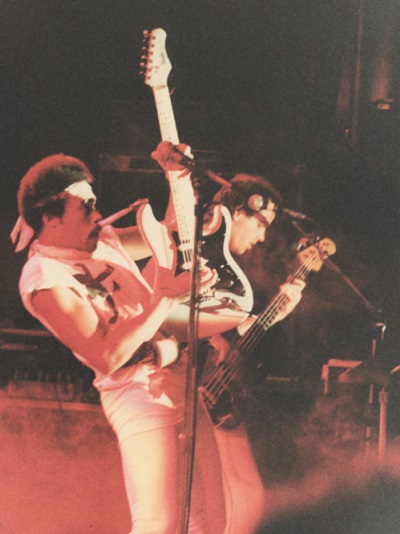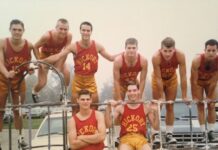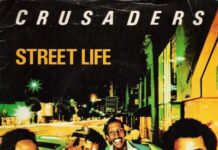Photos courtesy of Jon Butcher
When I’m not in full-blown public relations mode at my day job, I’m usually conferring with colleagues throughout the country about the bands and artists they’re currently digging into.
Occasionally, I receive a recommendation that makes me stop, look, and listen … on repeat. In one particular instance, the song was “Don’t Say Goodnight”; the band, New England’s own Jon Butcher Axis.
A quick YouTube search reveals the song’s MTV music video from 1984. Perfectly reflective of the times as well as the ubiquitous sound of AOR rock from that period, a few things make this track truly stand out: namely that despite being a trio, the Axis has a sound that could easily compete with the quintet of Journey, and that frontman/guitarist Jon Butcher bears the look of Phil Lynott; musical flair and aesthetic of Jimi Hendrix; and the voice of Sammy Hagar.
It’s been a few months since I’ve heard this song for the first time. I’m now averaging playing it at least twice a day. I’ve even gleefully insisted my wife Jen come into my hallowed music room for a listen. Fortunately, as I started looking further into the group, I was pleasantly pleased to discover that the song’s accompanying album on the Polydor/Polygram label, Stare At The Sun, is equally good as Butcher, bassist Chris Martin, and drummer Derek Blevins rock on and rock hard throughout.
Ask Butcher about the video for “Don’t Say Goodnight” though and you’ll get a mixed reaction: “At the time, I remember thinking, ‘This is pretty cool. There’s a house on an airstrip that goes up in the air and when the house goes up in the air, the band is under the house and people are jumping around,” he told me during a recent interview. “At the time we thought, ‘This is pretty cool.’ I look back and go, ‘Oh boy,’ you know. I think it’s an element of the times. I think that’s the kindest way to say it.”
Still, MTV being MTV (ah those were the days!) ensured that both the video and album would put the group on the map to stardom for a brief period. One key highlight would be opening shows for Birmingham’s Def Leppard on the latter’s Pyromania tour in 1984. Yet the group would enjoy a spate of local success before it was even signed to a label: Boston-based radio station WBCN would spin their track “Ocean In Motion” in heavy rotation.

“I can’t overestimate the impact that those guys had on launching Axis. They were on top of one of our songs before we had a record deal,” Butcher told me. “WBCN is one of the flagship radio stations around the country. It had a vicious following. I mean very, very popular. It launched many bands, amongst them Aerosmith and the J. Geils Band. What happened was the band had become successful locally and regionally and came to the attention of the J. Geils Band because of WBCN. That led to us opening up for their Freeze Frame tour of 77 cities. That opened the door for us getting signed with Polydor/Polygram.”
“When you have that kind of visibility from an unsigned local band, needless to say, doors opened,” Butcher adds.
Of course, like all great rock tales — and per the classic AC/DC adage — it’s a long way to the top if you wanna rock and roll.
“We played up and down the eastern seaboard as a local unsigned band,” Butcher said. “We had seen Humble Pie live and both Chris Martin, the bass player, and I said, ‘That’s what we want. There’s where we want to go — guitar-driven, drum-driven rock.’ I thought that we did it well.”
While the Axis’ first self-titled album would break into the Billboard Top 100, spurred in part by the single “Life Takes A Life” (and its accompanying video), Butcher acknowledges the group’s formal debut didn’t properly capture the sound and energy of the group live. Think back to the KISS dilemma of their first trio of albums followed by the multi-platinum powerhouse Alive!
“I was somewhat disappointed in the sound of the first record because I and the band felt like the record label didn’t understand who they signed. We were an intense and active rock band and known for our live performances. In my opinion, and in the opinion of some others, the first record was a little mild sounding,” Butcher says. “It didn’t in any way capture say the impact the first Van Halen record had. You heard “Running With The Devil,” it had an impact. Axis had that kind of impact live, but I don’t feel like that’s reflected in our first two records.”
Both this album and Stare At The Sun would be produced by former musician Pat Moran, best known for his production collaborations with Robert Plant, Edie Brickell, and Foreigner’s Lou Gramm.
“He never saw Axis live; he didn’t understand what the energy was,” Butcher said. “He never witnessed it firsthand, so he got handed an assignment with this band and heard our demos and we went from there.”
“Our issue was that we were not allowed to produce ourselves. Specifically, I wasn’t allowed to produce the band,” he adds. “We were a new band and what often happens with new bands is a producer comes in and what’s happening is you’re working in his interpretation of what the band is instead of letting the band do it. We got that far. We had gotten far enough to come to the attention of a national act that put us on tour, and we came to the attention of a major radio station on the east coast, and we came to the attention of the label ─ all without a producer guiding us.”
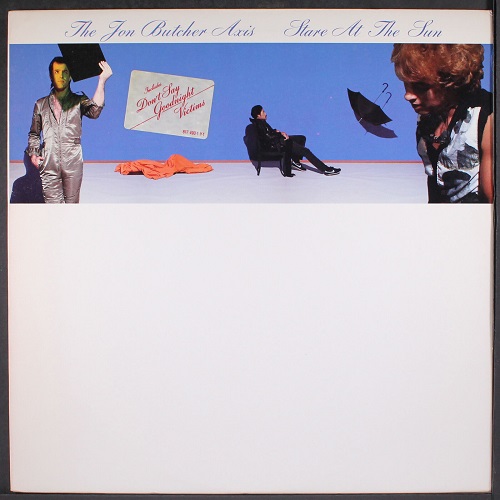
The group would have a little more production flexibility for Stare At The Sun, which boasts an edgier sound juxtaposed with softer tracks (a la “Dreams Fade Away”) that straddle the balladry line but are actually a precursor to the metal power ballad phase of the late-1980s. Additional highlights from the album include the following:
- Album opener “Wind It Up” and “Call To Arms,” which are both chock full of crunchy riffs and Butcher’s intense vocal grit.
- “Victims,” which could be considered a companion to Journey’s “Faithfully,” if played at twice the speed.
- “Can’t Tell The Dancer From The Dance” — undoubtedly the album’s funkiest number and arguably as catchy as “Don’t Say Goodnight.”
“’Don’t Say Goodnight’ — that came the closest to what we thought the band was. And another track, ‘Wind It Up,’” Butcher says. “I think ‘Walk On The Moon’ and ‘Wind It Up’ were my favorite tracks on that record.”
Butcher adds that the softer “Walk On The Moon” was unabashedly influenced by Sting and his Police bandmates.
“We really got into The Police at that time. I really dug what they were doing. We loved Sting; we loved the whole band – we just loved it,” he said. “Ironically, The Police were the inspiration for “Life Takes a Life” on the first record. So “Walk on the Moon” was an extension of where that left off.”
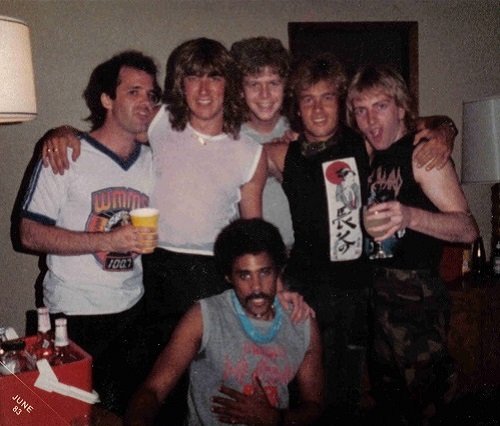
When asked if the band faced record label pressure to deliver hits and commercial sales with their sophomore album, Butcher offered the following:
“I think the fact that Polydor was willing to give us another try spoke to something that we did right. I can’t say that there was a particular reaction other than, ‘OK, you guys have to go on tour to support it.’ We took that as a positive. I mean if they didn’t dig it, they wouldn’t have given us tour support – it’s that simple.”
While Stare At The Sun would prove a stronger work than its predecessor, the group would only last for one more album, 1985’s Along The Axis before Butcher would embark on a solo career. Still, the release of Stare At The Sun did come with some perks.
“Our biggest tour during those records was with Def Leppard on the Pyromania tour. That was hugely successful for us and them obviously,” Butcher said. “As an opening act, we had a nice slot – like a 40- or 45-minute slot instead of 20 minutes. We had the use of the full stage and lighting, which you never got as an opening act. We took advantage of that and expanded our fan base.”
“(Along The Axis) followed Stare At The Sun and it wasn’t very commercially successful, but it was the beginning of my partner-in-crime Chris Martin and I more or less taking over the recording,” he adds. “There’s a couple of tracks on that record that are really cool. The title track I love.”
To this day, Butcher remains a force in the New England music scene while also working in music production. He remains grateful that even with the Axis’ highs and lows, the group still has a dedicated fan base that has been with them from their very start.
“I gotta be honest with you. There are fans that have stuck with us for 40 years. I can’t believe it. It’s amazing to me that the Axis was so important to people. I’m still amazed,” he told me. “I could name half a dozen acts who got record deals around the time we did that completely vanished. Somehow without the benefit of multiplatinum success, we established a core audience that has been loyal for four decades. That’s amazing to me.”
Special thanks to Chris Briley for inspiring this column!
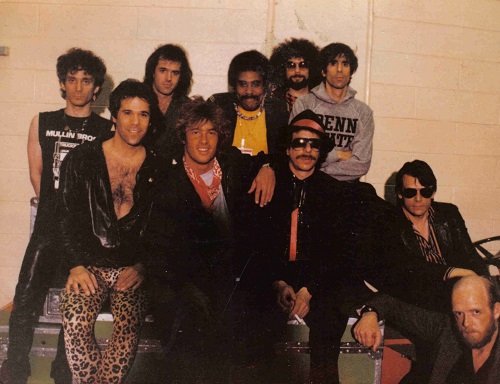
***
Share your feedback and suggestions for future columns with Ira at vinylconfessions84@gmail.com. Ira’s new book, “Hello, Honey, It’s Me”: The Story of Harry Chapin, is available for purchase here.


